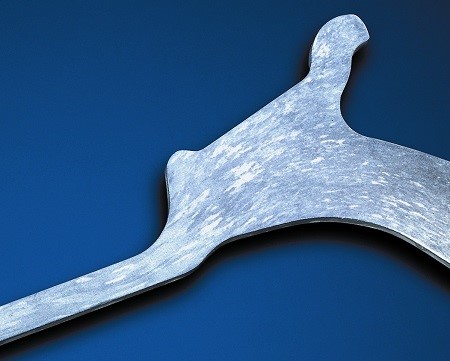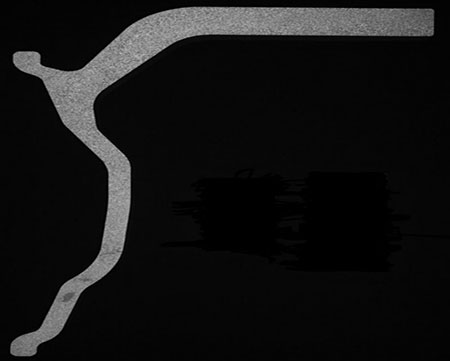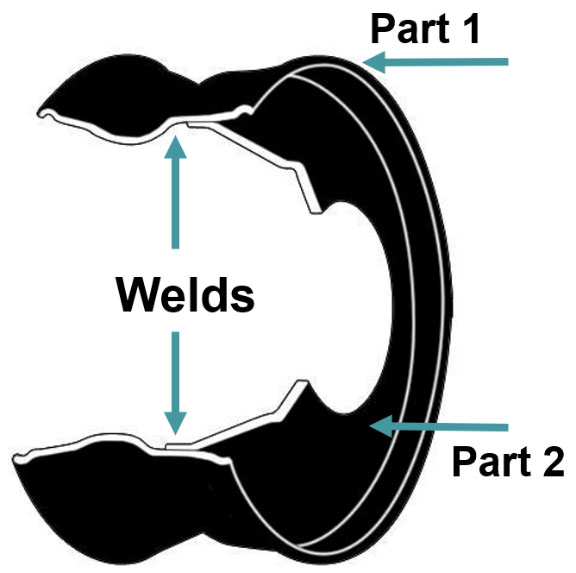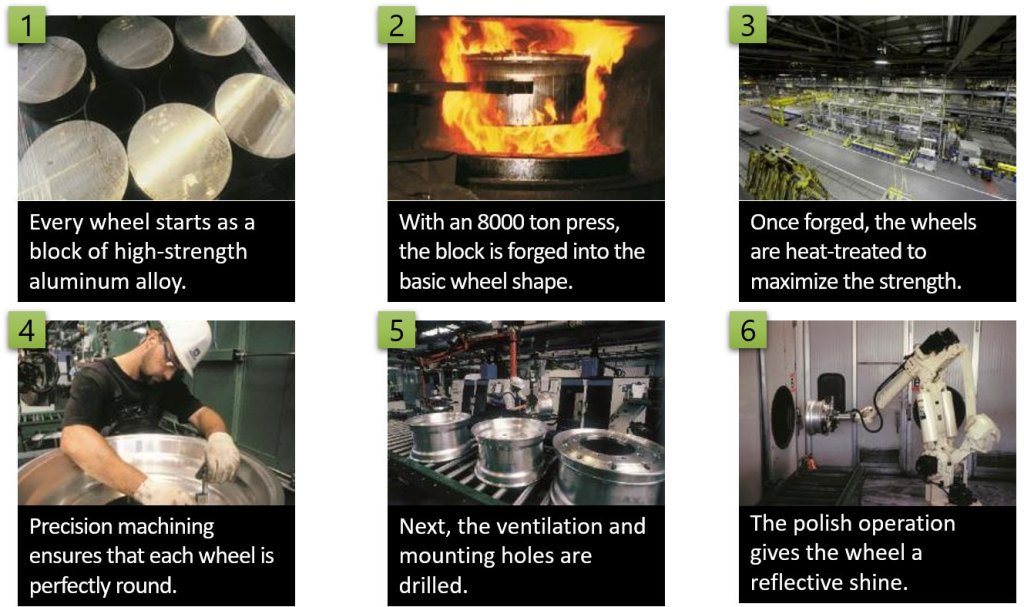To test the strength of a forged aluminum wheel versus a fabricated steel wheel, we recently conducted an impact test. Historically, these impact tests have been used to test cast aluminum wheels, for which they do not fare well.
To best understand the results of the impact test, it is important to understand how wheels are made and understand both their characteristics and properties.
The different type of wheels and how they are made:
The following is background on the differences between various type of wheels and what sets each apart in the industry. Today, there are three different types of wheels on the market:
- Cast aluminum wheels
- Fabricated steel wheels
- Forged aluminum wheels
A cast aluminum wheel is typically made of A356 aluminum alloy and manufactured similarly to Jell-o. A molten product is placed into a mold and following the process, creates a raw casting. It then goes through multiple, additional processes including an x-ray, which is most important. This is critical as the casting process contributes to porosities and inclusions that can be detrimental to the final product. Therefore, the x-ray process allows the operator to understand whether the porosity is the right size and in the right location so as not cause any issues. There are additional steps taken including running through a high temperature thermo process which allows the product’s final strength to be achieved. Finally, it transitions to machining, and then ultimately to finishing which results in either the part being polished or painted.

Forged aluminum wheel

Cast aluminum wheel
The making of a fabricated steel wheel is quite different. It begins with a blank of steel that is formed to the shape of the rim and follows the rim line. These wheels are not machined like the regular cast aluminum wheel, but rather formed. The center portion of the wheel goes through a press line, typically a transfer press, that punches out the holes necessary for the venting, the bolt hole, the center hole area, as well as the final shape of the center disk. Those two components are then welded together to create a two-piece wheel.

A forged aluminum wheel originates from the 6000 aluminum alloy series. It too is produced through a unique process that starts with a solid piece of aluminum cut to the specific weight necessary for the final forging. It then continues to a pre-heat process that takes it up to a temperature allowing it to be formed in the forged press. Once it finishes forging process, it is machined and polished.

Results of the Impact Test:
To learn more about the differences between forged aluminum wheels and fabricated steel wheels, read the blog Aluminum vs. Steel Wheels: An Age-Old Debate.
Be sure to visit our Expert Insights Blog and look out for our next post addressing the characteristics and properties of these different types of wheels.






